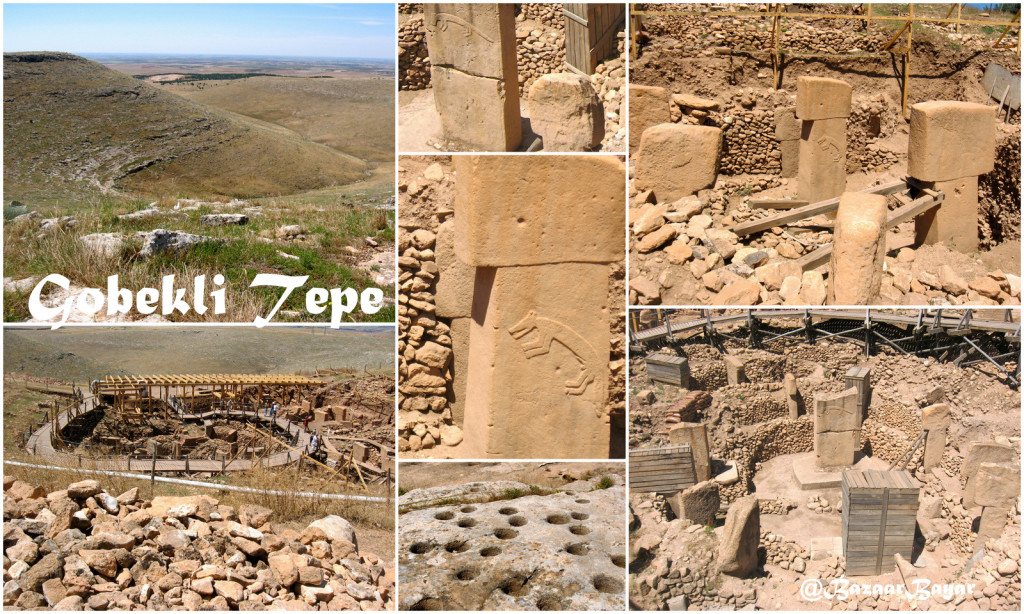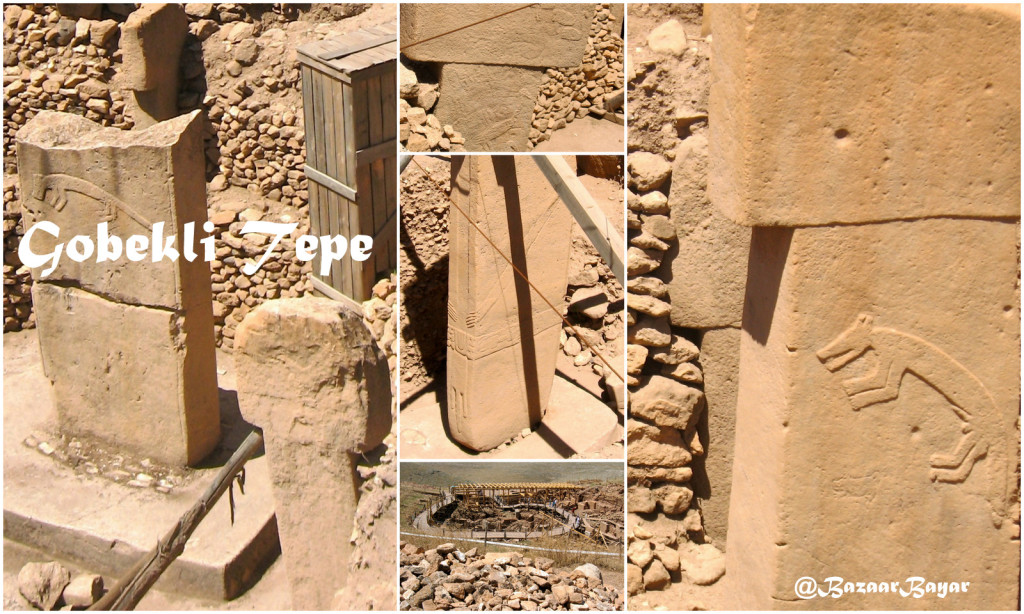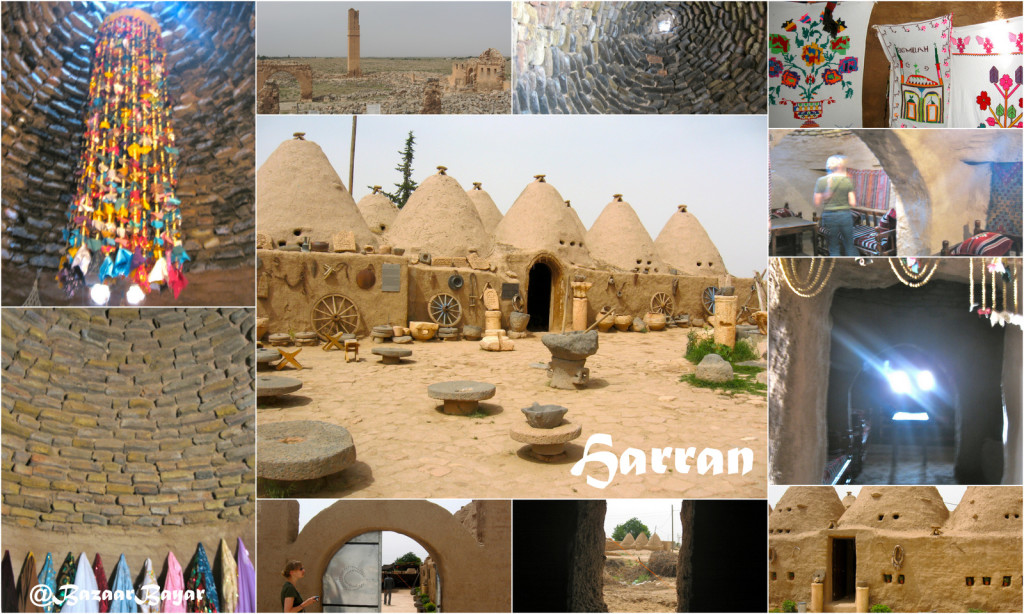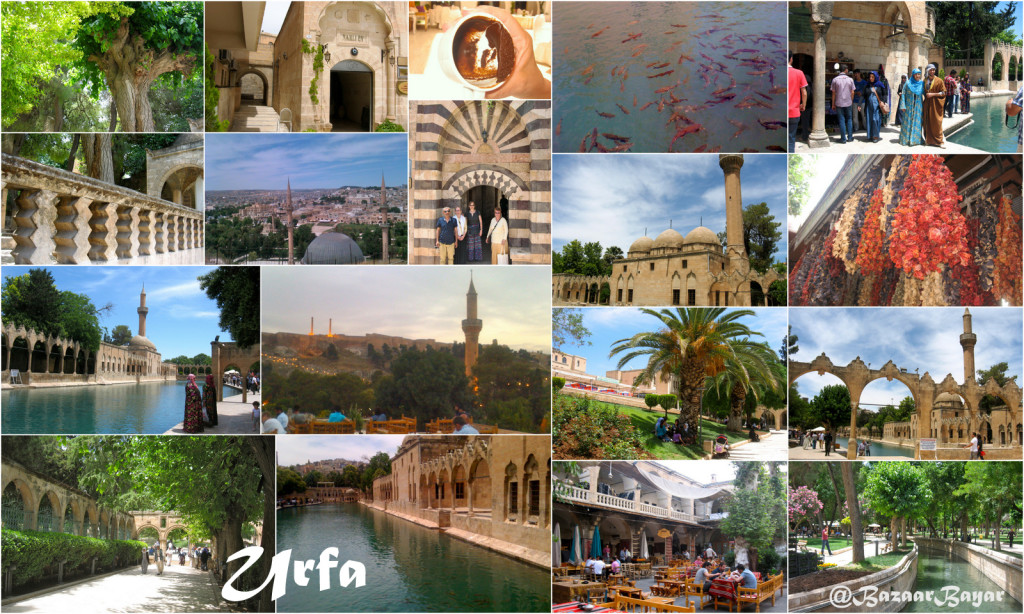We continue our Turkish Tulip Trip…to Gobekli Tepe, Harran and Urfa.
The depth of history in the Turkish Southeast is truly mind-boggling. Nowhere is that more clear than at Gobekli Tepe, believed to be the world’s oldest temple, at an estimated 11,600 years of age. That’s 7,000 years older than Stonehenge. According to National Geographic, Gobekli Tepe may well be where “the urge to worship sparked civilization”.
The site is quite isolated, only about a tenth of it excavated so far. Three Stonehenge-like rounds of 6 meter/18 foot high pillars are arranged in a circle around two more substantial pillars protecting portals in the floor, possibly gateways to the afterlife. Work began on the highest hillside, with another hill nearby which looks like a natural amphitheater. Basic diagrams explain in Turkish, English and Arabic that there are believed to be another 23 or so such rounds waiting to be unearthed. Evidence of those are scattered around the hilltop, shallow pockmarks about 8″/20cm in diameter, seemingly ‘drilled’ into the stone by an unseen giant hand.
Asymmetrically placed carved animals grace the sides of several pillars. A flock of ducks, a fox, a lizard-like creature, plus at least two human male forms, perhaps depicting dancing priests with belted loincloths and long arms wrapping around the pillars, are clearly visible. Our visit was at midday, making good photography difficult. The much publicized pics from National Geographic were far more theatrical, with dramatic lighting and skewed points of view, which I think will have some visitors walking away disappointed.
The circular wooden ramps constructed for visitors make it impossible to get too close, but it’s an interesting perspective to be looking down on such massive structures. No tour buses there during our visit, just small vans bringing Turkish academics from Ankara, plus a few curious Europeans. Gobekli Tepe, which means ‘potbelly hill’ in Turkish, is for now a site for diehard archaeology and mystery lovers, and will be fascinating to revisit as more is learned.
Moving forward on humanity’s timeline, we visited another site of major importance in Al-Jazira, this region of upper Mesopotamia. Harran, a merchant outpost begun in the Early Bronze Age, was crisscrossed by so many ancient cultures I won’t even try to make sense of them here. From the early worship of the Mesopotamian moon god Sin, to being the seat of an Islamic caliphate that ruled from Spain to Central Asia, to hosting the world’s first university, where scholars preserved and translated the scientific and philosophical works of the Classical Greek world into Syriac and Arabic, Harran today is dusty, forlorn place.
This ancient city is best known for its ‘modern’ era beehive houses made of unreinforced adobe, only a few remaining for show in this 3,000 year old architectural style. In the blazing sun of early June, they were cool inside, and surprisingly spacious and well lit by natural light coming in from an aperture on top and rows of small square windows. Adobe bricks formed circular domes over our heads, supported by square rooms open to each other by wide arches. I would have lingered longer here, since many of the walls were draped in hand stitched embroideries and weavings, but we were given the hardsell by a family of mostly women and children, who when we refused to buy souvenirs, insisted we eat a suspect lunch of watery stew outside under sparse shade in the heat.
We spent the night in Şanlıurfa, ancient capital of many names including Byzantine era Edessa, populated today by citizens of Kurdish, Arabic and Turkish origins. By now on our trip, that word ‘ancient’ was meaningless, better used for describing my weary body. Thankfully, the center of the city was surprisingly cool because of greenery and water, the pool of sacred fish. King Nimrod – not to be confused with Mount Nemrut – but the great-grandson of Biblical Noah and possibly the builder of the Tower of Babel, is the villain in this legend. A ruler jealous of Abraham’s increasing influence – THAT Abraham, father of the three faiths, believed to have been born nearby where the large domed mosque now stands – Nimrod had Abraham burned on a pyre. But God turned fire into water and coals into fish. We bought small dishes of pellets to feed those descendants. Years earlier when we had visited, a restaurant had served grilled fish in the garden here, but it has been replaced by a teahouse.
We were charmed by crowds of strolling families wearing Biblically traditional, sparkling bright clothing, until we realized the outfits were mostly costumes rented at a waterside kiosk by tourists from Turkey, Saudi and Northern Iraq. Urfa is a city with huge covered bazaar and coffee houses far more numerous than in Western Turkish cities. We recovered our strength buying spicy Urfa peppers, then drinking the regional wild pistachio coffee, “Menengiç kahvesi”. We read our futures in the grounds, while an ancient faced kid sang melancholy songs for money. Abit bought his first set of double-breasted Kurdish vest and Şalwar, the baggy wool traditional trousers, and we retired to a stone mansion turned chic modern hotel for the night.




Leave a Reply